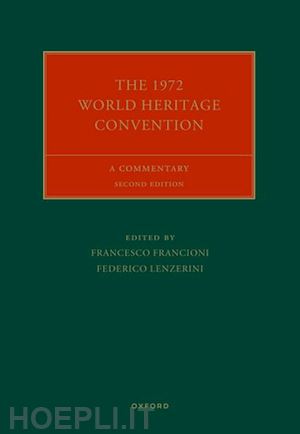Almost fifty years have passed since the adoption of the Convention Concerning the Protection of the World Cultural and Natural Heritage (the UNESCO World Heritage Convention). With its 194 States Parties, it is the most widely ratified convention within the family of UNESCO treaties on the protection of cultural heritage. The success of this Convention and its almost universal acceptance by the international community of states is due to the great appeal that recognising certain properties as “world heritage” has for national governments. Since the publication of the first Commentary, new problems have arisen in the management of world heritage sites. It has become increasingly difficult to properly monitor the conservation of the ever-growing mass of sites inscribed in the World Heritage List, and to resolve disputes over the formal designation of contested world heritage properties - a problem that has led to the withdrawal of the United States and Israel from UNESCO. New frontiers are now being explored for the expansion of the world heritage idea over marine areas beyond national jurisdiction, and the monopoly of the State in the identification, delineation, and presentation of world heritage properties is being increasingly challenged in the name of indigenous peoples' rights and by local communities claiming ownership over contested cultural sites. At the same time, the regime of world heritage protection has infiltrated other areas of international law, especially international economic law, investment arbitration, and the area of international criminal law. This second edition critically examines the World Heritage Convention against this dynamic evolution of international heritage law to help academics, lawyers, diplomats, and officials interpret and apply the norms of the Convention after half a century of uninterrupted implementing practice by State Parties and Treaty Bodies.











